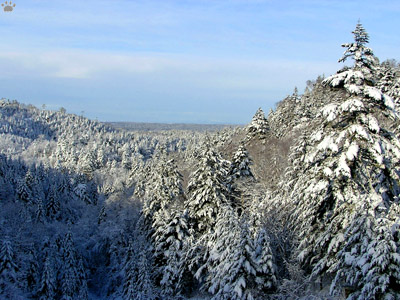
Forests east from Kushiro, Hokkaido.
Part 3. Hokkaido (continued)
The interior of Hokkaido has surprisingly continental climate, with hot summers and harsh winters. It's a beautiful land with lots of volcanoes, lakes, forests, and meadows - all of them under snow in winter.

Red-crowned cranes (Grus japonensis) dancing, Kushiro-Shitsugen National Park, Hokkaido. |
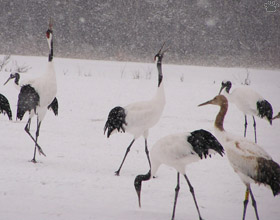
Pair calling in duo. Note a young bird (right). Kushiro-Shitsugen.
|
Tancho (red- crowned crane) is Japan's most popular bird, but it was hunted for food until the 1900-s. In winter, the remaining Hokkaido birds, plus a few from the Kurils, gather in a protected area near Kushiro.
|
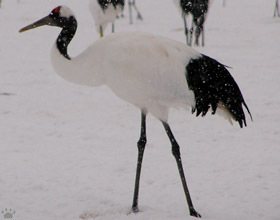
Adult red-crowned crane. Kushiro-Shitsugen Nat'l Park. |
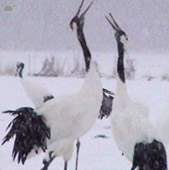 |
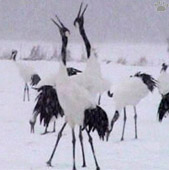 |
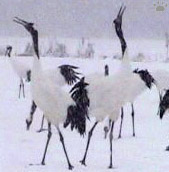 |
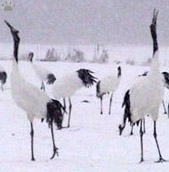 |
| Pair calling in duo, Kushiro-Shitsugen Nat'l Park. |

Cranes answering my call. Small birds are carrion crows (Corvus corone). |
Sometimes almost the entire population can be seen in one field. Cranes respond well to an imitation of their call - it's fascinating to hear dozens of birds answer your call.
|
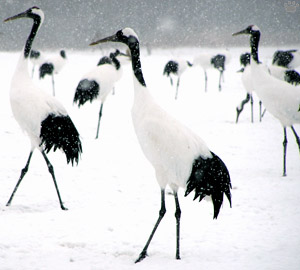
Cranes listening to my call. Kushiro-Shitsugen. |
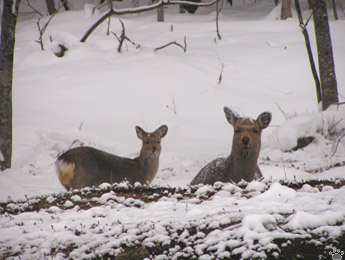 |
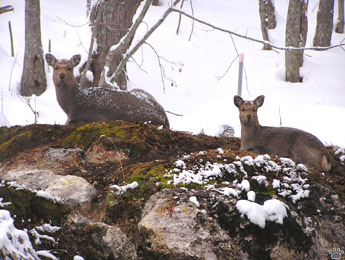 |
| Shika deer (Cervus nippon) wintering at hot springs, Akan National Park, Hokkaido. |
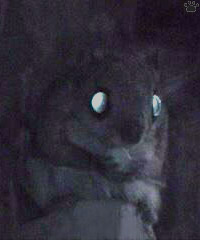
Eurasian flying squirrel (Pteromys volans),
Akan National Park, Hokkaido. |
Fauna of Hokkaido has more in common with Siberia than with the rest of Japan. The island used to have wolves, and there are still some brown bears, as well as Siberian chipmunks, Siberian salamanders, variable hares, Eurasian flying squirrels, red-backed voles, hazel grouse, and other northern species.

Siberian weasel (Mustela sibirica), Akan Shiretoko Nat'l Park. |
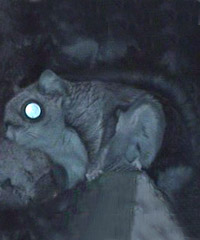
Eurasian flying squirrel (Pteromys volans),
Akan Nat'l Park. |
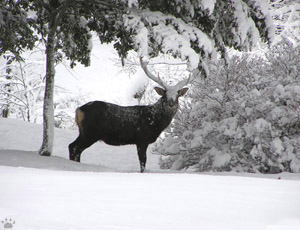
Sika deer (Cervus nippon), Shiretoko National Park. |
Sika deer is the most common large mammal. As for smaller stuff, one crater lake is famous for marimo ball algae (right), a local symbol of cuteness.
|
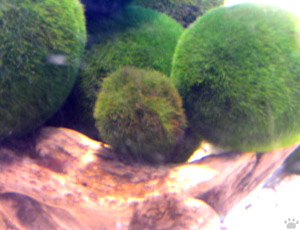
Cladophora ball algae (Aegagropila linnaei), Akan National Park. |
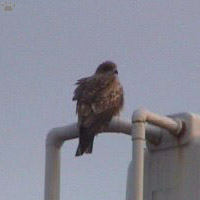
Black kite (Milvus migrans), Kushiro, Hokkaido.
|
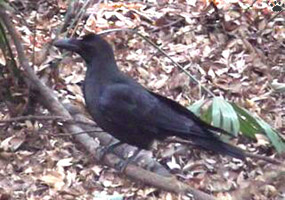
Jungle crow (Corvus macrorhynchos), Shiraoi, Hokkaido.
|
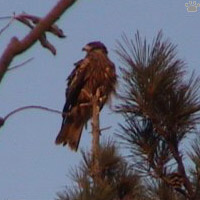
Black kite, Sapporo, Hokkaido. |
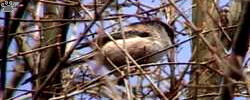
Long-tailed tit (Aegithalos caudacutus), Shiretoko. |
Most birds leave the interior in winter. Those that remain stay close to towns, like kites and crows, or comb forest trees for hibernating insects, seeds or berries.
|
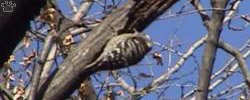
Japanese pygmy woodpecker (Pikoides kizuki), Shiretoko. |
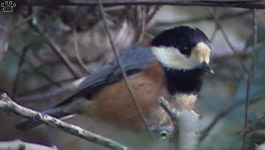
Varied tit (Parus varius), Akan Nat'l Park.
|
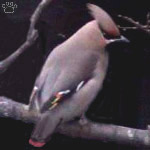
Japanese waxwing (Bombycilla
japonica), Shiraoi.
|
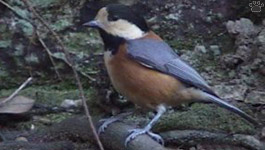
Varied tit, Akan Nat'l Park. |

Forest, Akan National Park, Hokkaido. |
December of 2005 was unusually cold in Japan, especially on Hokkaido. In two days I was on the island, there were two snowstorms. A train was turned over by the wind somewhere near Sapporo. Forests were covered by deep snow within a few hours.
|
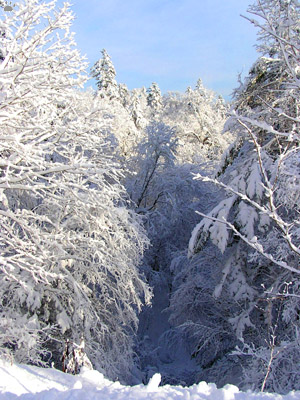
Forest, Akan National Park, Hokkaido. |

Hydrangea flowers on the snow, Akan National Park. |
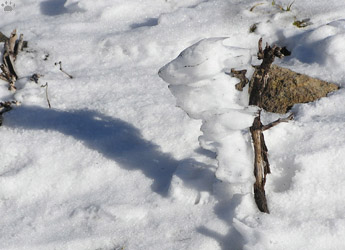
Wind-sculptured snow, Shiretoko National Park. |
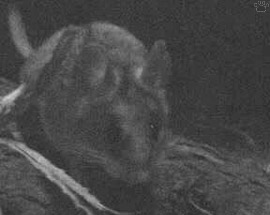
Silver mouse (Apodemus argenteus), Shiretoko National Park. |
I spent a freezing night in a rental car, waiting for a Blakiston's fish-owl (see above) to show up at a river with a good salmon run. Walking through the forest next morning, I found a mouse nest with babies in a hollow tree. The snow was still falling, but the mice didn't mind.
|
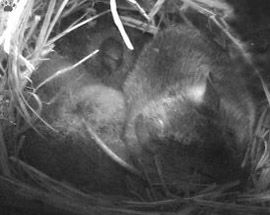
Silver mouse nest, Shiretoko National Park. |
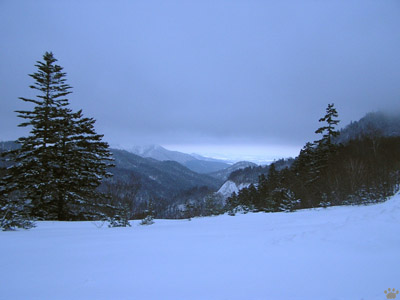
Winter evening in Akan National Park, Hokkaido. |
Part 4: Nikko
Back to Part 2 Home
|